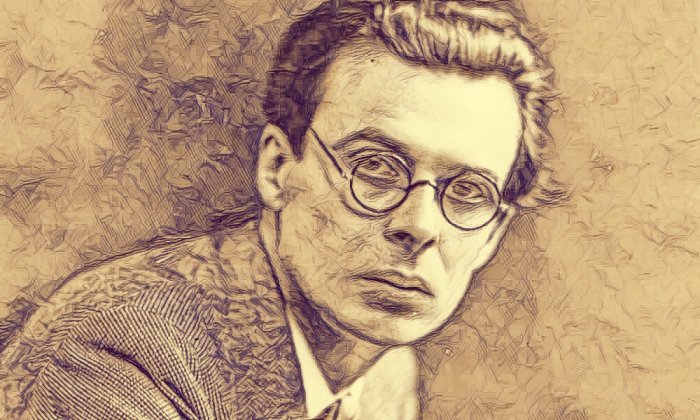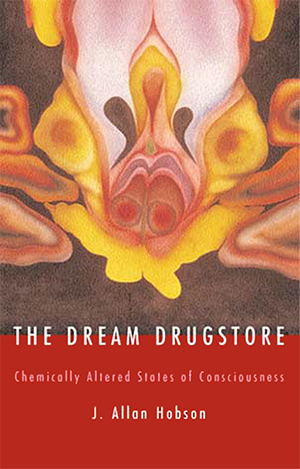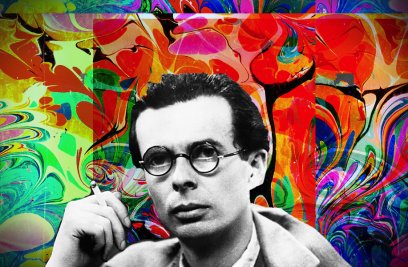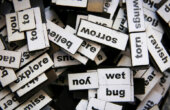Aldous Huxley's Deep Reflection

The following article is excerpted from J. Allan Hobson’s 2002 book “The Dream Drugstore: Chemically Altered States of Consciousness.” Hobson, a Harvard psychiatrist, pioneering sleep researcher, and prolific author, died in 2021.
Good descriptions of trance states are hard to come by. Because the very name “trance” has such spookily provocative connotations we are not tempted to learn about it. One consequence is that those of us who are not easily able to enter such altered states tend to be ignorant of what it actually feels like. We may even be fearful of the implied loss of control. The upshot is a tendency to discount the whole story as a fabrication, so we can remain safely and smugly skeptical. But if we continue to ignore trance, we miss the opportunity to learn from it and to better understand it.

Aldous Huxley’s capacity to enter — at will — the dissociated state he called “deep reflection” is of value because Huxley was a painstaking self-observer. Anyone who cut his novelistic teeth (as I did) on such brilliant books as “Antic Hay” or “Point Counter Point” will share my admiration of Huxley’s wit, his literary elegance, and above all, his interest in interpersonal relationships. He is a very special kind of expert witness to his own unusual states of consciousness, which he actively cultivated in the service of his writing. Because Huxley’s interest in the vicissitudes of altered states extended to mysticism and to psychedelic drugs, he is an ideal contributor to our inquiry into the Dream Drugstore. One final point: Huxley was so open that he was willing to collaborate with the hypnosis expert Milton Erickson, despite having his own biases. Erickson’s involvement provides a valuable and welcome degree of objectivity.
Erickson met Huxley in his Los Angeles house in 1950, and they spent the day experimenting together and making extensive notes. Because Huxley’s own notes were lost in the tragic brush fire that later destroyed his home and library, we rely on Erickson’s for a description of Huxley’s deep reflection as a state
marked by physical relaxation with bowed head and closed eyes, a profound progressive psychological withdrawal from externalities but without any actual loss of physical realities nor any amnesias or loss of orientation, a “setting aside” of everything not pertinent and then a state of complete mental absorption in matters of interest to him. Yet, in that state of complete withdrawal and mental absorption, Huxley stated that he was free to pick up a fresh pencil to replace a dulled one to make “automatically” notations on his thoughts and to do all this without a recognizable realization on his part of what physical act he was performing. It was as if the physical act were “not an integral part of my thinking.” In no way did such physical activity seem to impinge upon, to slow, or to impede the train of thought so exclusively occupying my interest. It is associated but completely peripheral activity. … I might say activity barely contiguous to the periphery.
Huxley was able to enter his state of deep reflection in about five minutes. He simply “cast aside all anchors” of any type of awareness and thereby achieved an “orderly mental arrangement” that permitted his thoughts to flow freely as he wrote. When he demonstrated this, Erickson observed that Huxley was completely out of touch with his surroundings, a feature that was amply confirmed by Huxley’s wife, who often found him sitting in his chair oblivious to the world while his behavior was “automatic like a machine moving precisely and accurately.” It took him about two minutes to emerge, after which he described the “timeless, spaceless void” that he had left, and “a total absence of everything on the way there and on the way back and an expected meaningless some thing for which one awaits in a state of Nirvana since there is nothing more to do.”
Huxley could alter the features of the state by autosuggestion or upon Erickson’s instruction. He could see color or he could limit his descent to a lighter level and still retain contact with Erickson. But like subjects in the forbidden zone of lucid dreaming, Huxley tended to be pulled deeper or to exit when his concentration was interrupted by verbal or nonverbal commands. In other words, the introduction of volition, presumably mediated by the frontal cortex, acted in opposition to the trance state.
When he tried to induce auditory and visual hallucinations, Huxley found it difficult to remain in trance unless he built up the hallucinatory scenario by attaching the sound of music to the sense of rhythmic body movement. When Huxley moved the music up to the level of opera so that he could hear singing, he was observed by Erickson to be mumbling.
This constructive process, by which motor commands become the internal stimuli for sensory experience, is exactly what occurs in REM sleep dreaming when oculomotor and vestibular signals generate dream imagery. When this process was going on inside Huxley’s head, Erickson observed changes in Huxley’s head position and in his breathing pattern. By feeling his head turn from side to side Huxley was able to evolve a giant rose, three feet in diameter, from what was at first a barely visible rhythmically moving object.
Several other formal features of Huxley’s trance condition are of interest with respect to the analogy we have drawn with REM sleep dreaming. We first consider the relaxed posture, indicating a step on the path to cataplexy. In full-blown cataplexy, the assumption of a flaccid posture is associated with the inability to move on command and is thus similar to the active motor paralysis of REM sleep dreams. Anesthesia and amnesia were both present in Huxley’s trance, although they tended to be selective, and when Huxley attempted to make them global, his trance deepened. Time distortion, a distinctive component of the orientational instability of dreams, was a robust aspect of Huxley’s altered state.
A most dramatic finding was Huxley’s ability, in 65 percent of the trials, to give the correct page number when passages of his books were read to him.
A most dramatic finding was Huxley’s ability, in 65 percent of the trials, to give the correct page number when passages of his books were read to him. Huxley claimed that he could recall most of his writings at will, so that when he heard a passage he could then mentally read the antecedent and subsequent paragraphs, whereupon the page number “flashed” into his mind. This almost incredible feat of hypermnesia is paralleled in dreaming by the unbidden emergence of characters and incidents from the distant past; it contrasts, significantly, with the loss of recent memory capacity. It is as if the loss of the diminished capacity to record were complemented by or compensated for by an enhanced capacity to play back! The mechanism of this reciprocity must be explained both at the level of regional circuitry and at the level of neuromodulatory balance.
Even more incredible is the description of age regression, the final tour de force of the Erickson-Huxley encounter. I give a passage [included in Charles Tart’s 1969 book “Altered States of Consciousness”]to convey the claim directly and to let the reader decide what to make of it:
He turned back and noted that the infant was growing before his eyes, was creeping, sitting, standing, toddling, walking, playing, talking. In utter fascination he watched this growing child, sensed its subjective experiences of learning, of wanting, of feeling. He followed it in distorted time through a multitude of experiences as it passed from infancy to childhood to school days to early youth to teenage. He watched the child’s physical development, sensed its physical and subjective mental experiences, sympathized with it, empathized with it, thought and wondered and learned with it. He felt as one with it, as if it were he himself, and he continued to watch it until finally he realized that he had watched that infant grow to the maturity of 23 years. He stepped closer to see what the young man was looking at, and suddenly realized that the young man was Aldous Huxley himself, and that this Aldous Huxley was looking at another Aldous Huxley, obviously in his early fifties, just across the vestibule in which they both were standing; and that he, aged 52, was looking at himself, Aldous, aged 23. Then Aldous, aged 23 and Aldous aged 52, apparently realized simultaneously that they were looking at each other and the curious questions at once arose in the mind of each of them. For one the question was, “Is that my idea of what I’ll be like when I am 52?” and, “Is that really the way I appeared when I was 23?” Each was aware of the question in the other’s mind. Each found the question of “Extraordinarily fascinating interest” and each tried to determine which was the “actual reality” and which was the “mere subjective experience outwardly projected in hallucinatory form.”
The question of whether such experiences are “actual reality” or “mere subjective experience outwardly projected in hallucinatory form” is central to current debate that pits “veridical experience” against “false memory” and pits multiple personality against role-playing. Although Huxley’s apparently exceptional ability to enhance recall by altering the state of his brain and our own ability in dreams to relive early experience are clear evidence that memory is state dependent and can be altered, none of the evidence supports the now thoroughly discredited idea that every experience, thought, and feeling is recorded in the brain-mind forever and is therefore theoretically retrievable. And none of it counters the strong positive empirical evidence that memory is easily distorted or even fabricated in response to social demands.
What hypnosis now needs to advance as a science is the application of the scientific principles and techniques that other Huxleys developed, from Thomas Henry Huxley (1825-1895), who championed the theory of evolution as “Darwin’s Bulldog,” to Andrew Fielding Huxley (1917-2012), who advanced the ionic hypothesis of the nerve action potential and won the 1963 Nobel Prize for Physiology and Medicine, and Hugh Ensor Huxley (1924-2013), whose sliding filament theory of muscle contraction explained how chemical energy is converted to movement.
How, we wonder, would a PET scan of Aldous Huxley’s brain in deep reflection compare with the images collected in outwardly attentive waking, deep sleep, and that most easily obtained altered state of consciousness, REM sleep dreaming? My guess is that it would look more like REM than deep sleep or waking.
J. Allan Hobson was a Harvard psychiatrist who pioneered the first serious scientific alternative to Freud’s ideas about dreams. He was the author of close to two dozen books, including “The Dream Drugstore,” from which this article is excerpted.




